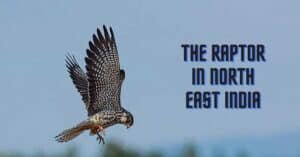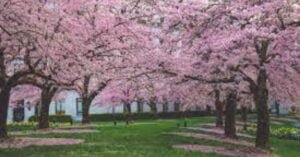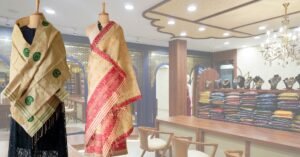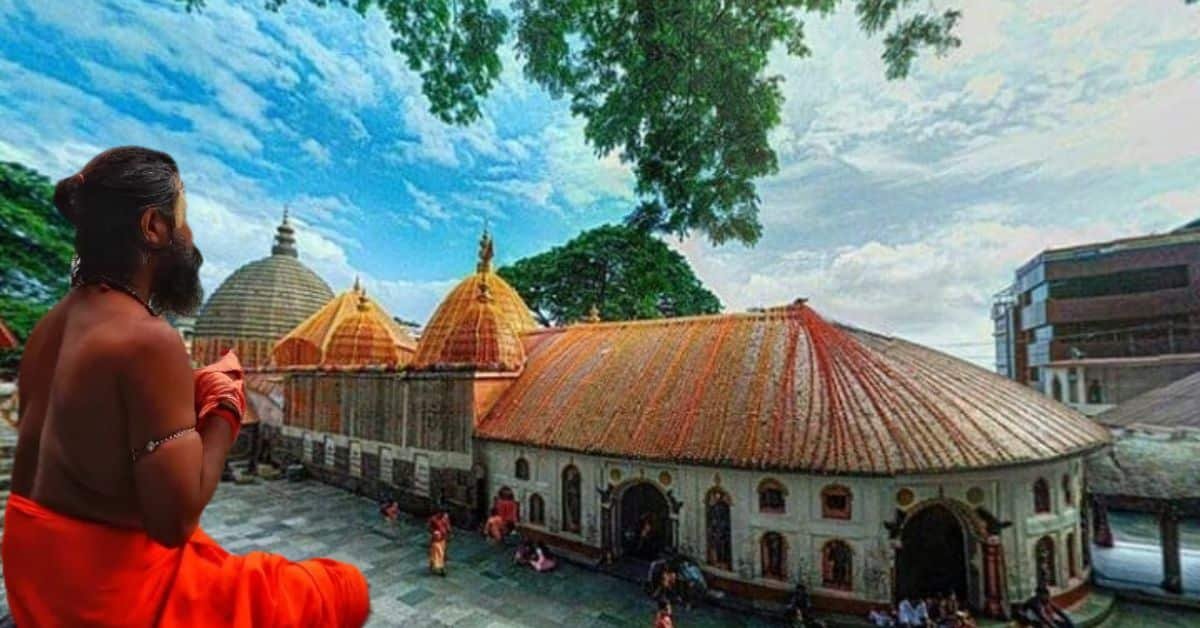Introduction of The Hajong Tribe
The Hajongs are one of the numerically small tribal communities of Assam. The Hajong tribe areis scheduled as a tribe in the two autonomous hill districts, viz., Karbi Anglong and North Cachar Hills. While the major portion of the Hajong population live in the Garo Hills of Meghalaya, a small number of them live in Assam. Apart from the two hill districts, there are a good number of Hajong villages scattered over the plains of Assam in the Brahmaputra valley. In the plains districts of Assam, their main con- centration is, however, confined to the Lakhipur area and the southern region bordering Meghalaya in the South Salmara subdivision of Goalpara district. A limited number of Hajong families are at present inhabitants of Arunachal Pradesh also. Prior to independence of India there were several Hajong tribe settlements in Mymensing and Sylhet districts of present Bangladesh (erstwhile East Pakistan) But the partition of the country had resulted in migration of these people to then undivided Assam.
Why They Are Named as Hajong
There has not been any agreed opinion in regard to the place where the Hajongs originally inhabited. According to their own traditional belief, they originally inhabited Has Paragana’ or in Hajo area of present Nalbari district. Due to some historical reasons they were compelled to leave Hajo area and they fled to Garo Hills from where they spread to Mymensing, Rajsahi, Sylhet, etc, places of the Bengal. Whatever might be their original place of habitation, it could conclusively be said that the Hajongs like the other tribes of North-East, had been living in this part of the country including some areas of present Bangladesh, which was once an integral part of India, from time imme- morial although due to various socio-political, historical and economic reasons they had migrated within a specific area either voluntarily or out of compulsion. Why the members of this particular community are called ‘Hajong, the expressed opinions of the scholars belonging to this community differ, not to speak of others. This traditional anecdote assumes that the Hajongs were the descendants of the king Kumar Bhaskar Barman and the term Hajong is derived from the term ‘Haj which refers to the inhabitants of the ancient township of Hajo.
Majority of the scholars of the Hajong tribe , however, are of the opinion that the word Hajong’ originates from Garo word ‘Ha-Jong’. In Garo ‘Ha‘ means land and ‘Jong‘ means ants or worms. Thus Hajong literally means land-ants or worms. But here ‘ants’ or ‘worms’ should not be regarded in its literal meaning. Here the term “Jong’, meaning ‘ants’ or ‘worms’ refers people who are expert in ploughing. Since the Hajongs depend mainly on agriculture with plough cultivation, hence the reference. The term ‘Jong’, therefore, should not be treated as derogatory equalizing a section of the people with ants or worms.
Demography
Numerically the Hajong population in Assam is very very small. It has already been mentioned in the Introduction that the Hajongs are a scheduled tribe in the two auto- nomous hill districts of Assam only. Their population, as per 1971 Census, in the two autonomous districts of Assam is 386 out of which there are 227 males and 159 females. This population figure does not, however, include the Hajongs inhabiting the plains districts of Assam. As per latest data, India has 71,800 hajong people, whereas Bangladesh has 8000 people from the Hajong tribe.
Language of The Hajong Tribe
The Hajongs have their own language which appears to be a mixure of Assamese and Bengali. Dr. D.N. Majumdar calls it JHARUA dialect of Assamese. Mr. Matilal Barman however, regards the language spoken by the Hajongs at present as a branch of Kamrupi language (Assamese spoken in lower Assam districts in colloquial sense). Mr. Ratan Kumar Rai Hajong, however, believes that the Hajongs had their own language in the distant past. When and how the language disappeared nobody knows, s
Fairs and Festivals of The Hajong Tribe
Like. the other sections of the Assamese society the Hajongs also observe three Bibus. The Rangali Bihu is called SAITA SANGRANI by them, On the first day of this festival the cows are worshipped also in the evening. not only bathed but The second day, activities are confined among the family members and the relatives. Shewing of Neem leaves and fixing of Neem leaves on the roof are two important events. It is believed that Neem leaves have very highly effective medicinal value and their shewing and fixing on the roof would keep diseases away from the family concerned for the entire year. On this day the younger ones pay their respects to the elder members of the family and pray for the blessings.
Another important event performed by the Hajong tribe during this festival is known as ‘LEWA-TANA BIHU. ‘LEWA’ means creeper and TANA’ means pulling. Thus the literal meaning of ‘LEWA-TANA’ means pulling of creeper. Among the Rabhas also there is a dance called LEWA-TANA’ where two groups of young boys and girls one group at each end-pull at a strong creeper for the purpose of trying their strength. It is, in other words, just like the Tug-of-war game in modern sports. Among the Hajongs although there is no creeper pulling, still it is called ‘LEWA-TANA-BIHU’. In this Bihu two groups of Hajong tribal youth – one consisting of young boys of marria- geable age and the other consisting of young girls of marriageable age putting on their traditional dresses and ornaments dance and sing songs of love in their own languages.. If the songs are rendered into Assamese one would hardly find any difference between the contents of these songs and those of the Assamese Bihu songs. In fact in the ‘LEWA-TANA BIHU’ intimate relationship grows between the young boys and girls according to their liking and exchange of heart and mind takes place which ultimately ends up in marriage between the lovers ows in due course.
The Hajong tribe also observe Kati Bihu which they call KATIGASHA. On this day earthen lamps are lighted in the evening at the paddy field with a view to propitia- ting goddess Lakhmi.
The Hajongs also perform Magh Bihu which they call ‘PUSHNA’. Arrangement of community feast with newly harvested rice is the main feature of this festival.
BASH PUJA
Bash Puja or the worshipping bamboo is one of the important religious ceremonies performed by the Hajong tribe . It is held in the month of Bohag (mid April), the first month of an Assamese year. Three newly cut bamboos are used in the performance of this Puja which continues for three days The three bamboos are cut by an assemblage of villagers from a particular grove. After decorating them with white or red cloths, the bamboos are fixed on the ground and then worshipped. The two main bamboos represent two gods. But who are the two gods? There are divergent opinions. According to some, the two bamboos represent Madan and Gopal (Krishna) while according to some others, they represent Siva and Parvati. A few scholars regard this Bash Puja asa kind of worship to Indra, the king of gods. Majority, however, believe that it is a kind of sex-worshipping and the two main bamboos actually represent Madan Kam, the sex god. The last opinion seems to be more logical because of the fact that during the entire period of Bash Puja continuing for three days, the young boys dance in rhythms in the tunes of the musical instruments and the songs sung by the GEETALS or the professional singers. While the first few songs are devoted, to various gods and goddesses, the remaining ones are love songs only. Although the women can not participate in singing and dancing, nevertheless, they enjoy the dancing and singing by their menfolk as onlookers.
PADMA PUJA:
Every Hajong family is to perform this Puja prior to the celebration of any marriage in the family. Padma (Manasa), the goddess of snakes and reptiles is worshipped with offerings by the head of the family with left hand only. This is followed by a sacrifice of a goat. Goddess Padma is worshipped with prayers to protect the couple to be married from snake bite.
KARTIK PUJA:
Kartik Puja is performed exclusively by women only. Mer are neither allowed to participate nor are they all- owed to visit the place of worship. They can, of course, visit the place when the puja is over at the dawn. It is performed towards the end of the month of Kati (September-October). God Kartik is considered by the Hajongs as the giver of sons and crops.
For the observation of this Puja, a few days before the actual commencement of the function, near the Tulsi (Basil) plant an old woman performs mock cultivation by tilling a very small plot with the help of two small girls as if they were a pair of bullock. After tilling, various seeds are sown at the site. On the day of the Puja the idol of Kartik is installed and worshipped at night by the women of the village. The women who desire sons have to observe fast, come to the place of worship and pray to the god Kartik to bestow them with sons. Throughout the whole night singing and dancing by women continue. The songs narrate the various qualities of god Kartik.
Besides these three main Pujas, the Hajongs also perform BRAT Puja as a mark of the completion of wet-paddy cultivation, GARAM Puja in the paddy field when the rice is about to ripe with a view to propitiating goddess Lakhmi and Bastu Puja under a tree or near a temple where the earthen idols in the shape of elephants and horses are worshipped. It has earlier been stated that the Hajongs believe in the existence of a number of evil spirits which are required to be appeased sometimes even with the sacrifice of goats
and birds.
Traditional Dress of The Hajong Tribe
The Hajongs have their traditional dresses which are, of course, few in number. The main dress put on by a Hajong woman is ‘PATIN’ and it is also called RANGAPATNI because the colour of this piece of dress is red. PATIN is used by women like Mekhela and it covers their bodies from the waist to the ankle. PATIN is woven by women at their family looms. There are stripes of blue threads in this piece of cloth and it is woven with designs of flower. Their traditional loom is called BANA where the use of two hands is only necessary. The women generally do not use blouse. They cover the upper part of their body with a home woven cotton scarf called PASRA or AGRUN. This piece of cloth is also woven with flowery designs. During festivals they also use a piece of cloth around the waist and it is called KAMARBANDHA. The men wear a home woven piece of cloth bigger than Gamosa and it is called NINGTI. During winter they use a scarf to cover their body and they also use a kind of muffler around their neck and it is called KAMPESH. It may be mentioned here that all the clothes needed in the marriage of a girl are required to be woven at the family loom, preferably by the girl herself.
Conclusion
The Hajongs, although numerically small, are one of the most colourful tribes of Assam with, their own culture and tradition which find their menifestation in their songs dances, music, fairs and festivals. They, are a peace-loving and mild natured people who are found to be conscious about their own place in the welfare and development field among the different ethnic groups of Assam. Their own conscious efforts together with the efforts of the State government would surely bring them at par with the others.











